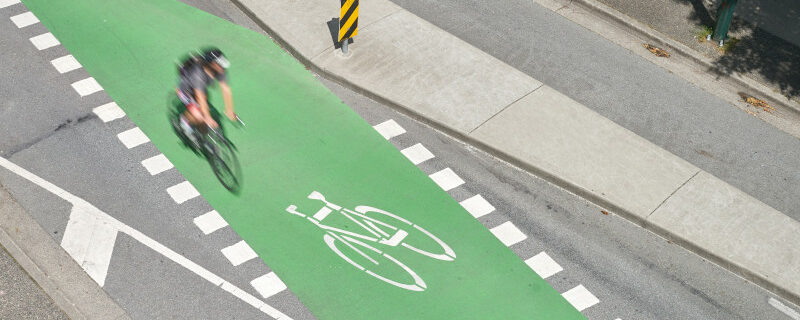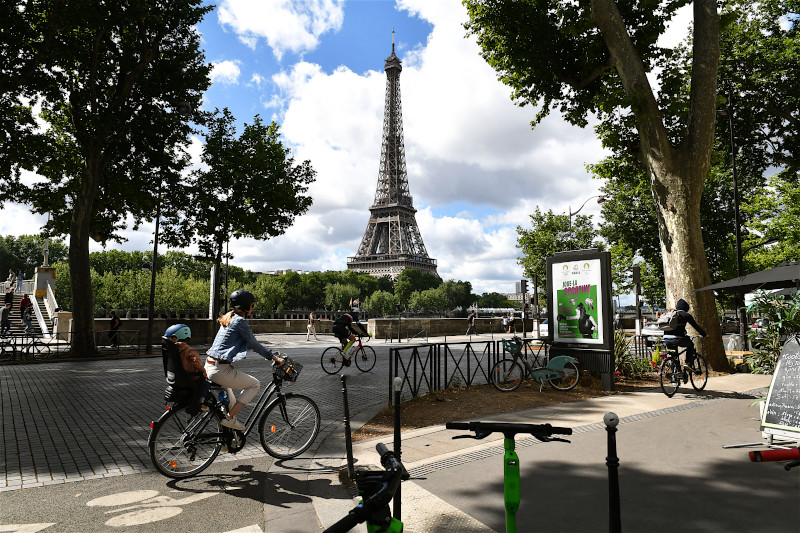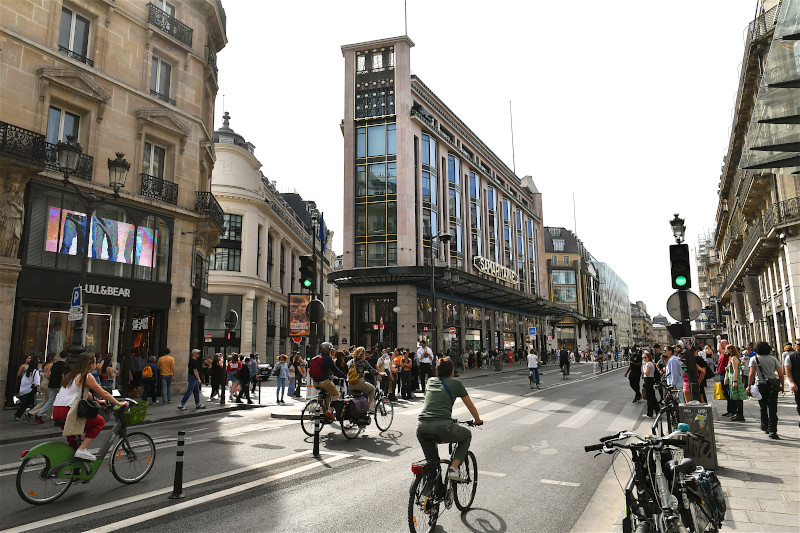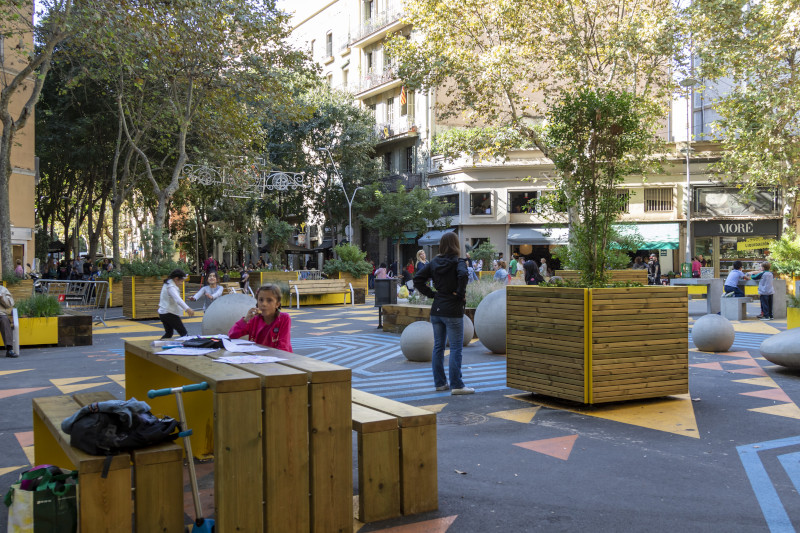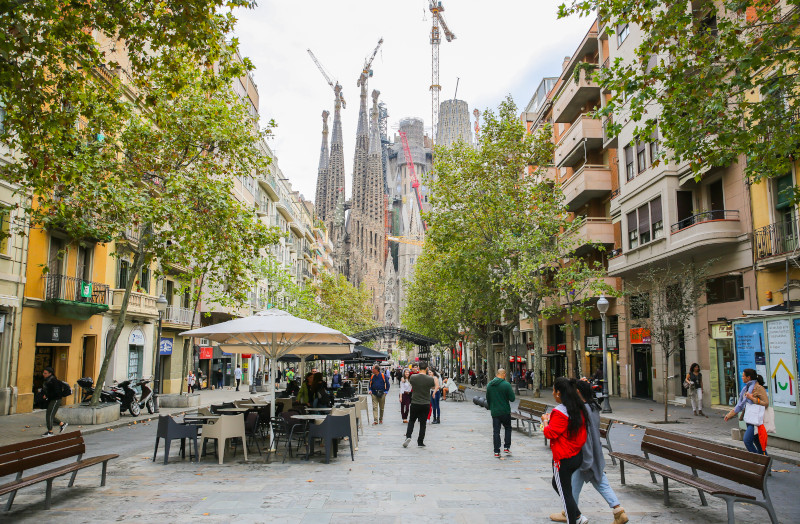As summer settles into the northern hemisphere many people are pulling their bicycles from storage to go for leisurely rides with friends and family. Yet for many others around the world, cycling is not just a recreational activity—it’s a primary mode of transportation. More and more, people are relying on cycling to get around, especially in urban areas.
The trend of increasing numbers of cyclists taking to the streets has not been lost on the United Nations General Assembly, which in 2022 passed a resolution to encourage the integration of cycling into sustainably developed transportation systems. This followed their 2018 declaration of June 3 as World Bike Day.
Some countries, like Denmark and the Netherlands, have long embraced cycling, and their city streets are used by tens of thousands of cyclists every day. In North America, the cities of Minneapolis, Montreal, and Portland have been at the forefront of the bicycle movement. More recently, major cities like Paris and New York, with enthusiastic backing from their mayors, have been funding infrastructure that encourages bike travel.
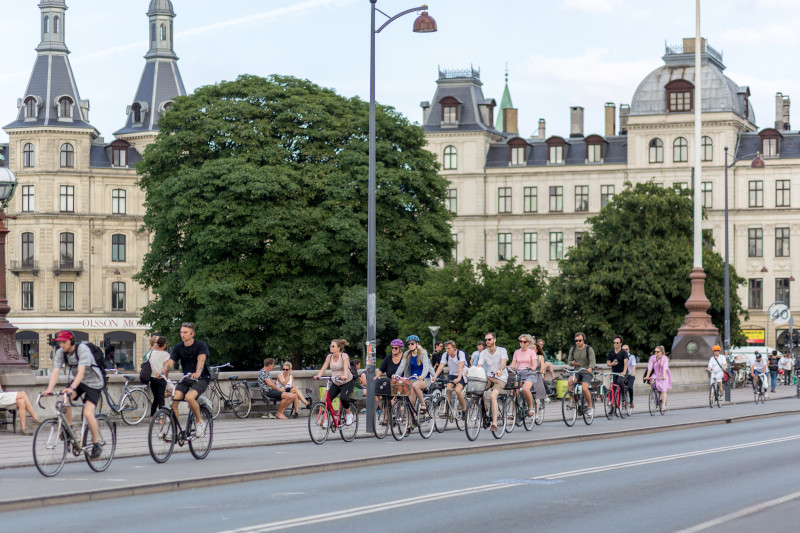
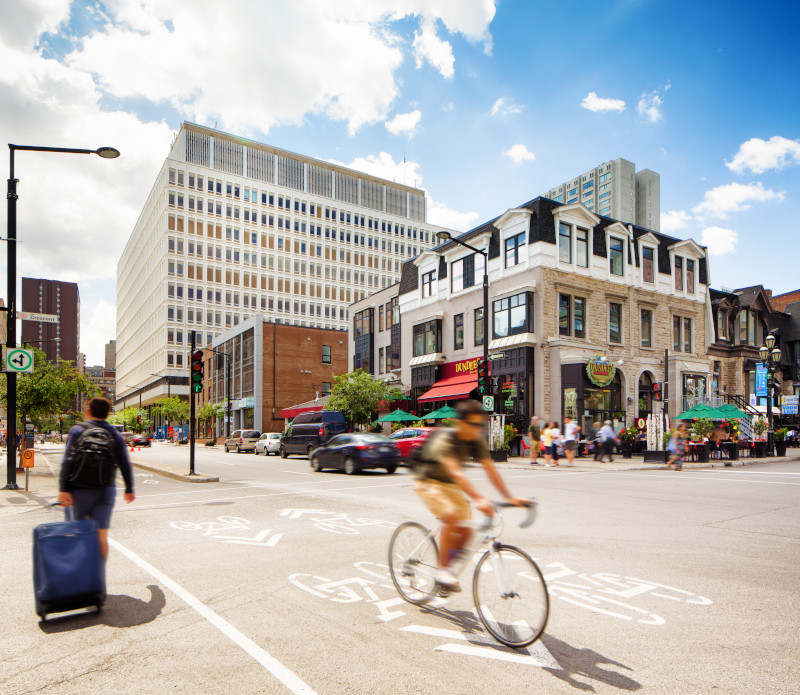
Accommodating multiple road users competing for space
As part of its ambitious Bike Plan, Paris intends to become 100 percent cyclable by 2026. In doing so, it will remove 70,000 parking spaces that have long dominated streetscapes. The city will also gain 180 kilometers (112 miles) of new permanent bike segregated lanes, and its bike parking spots will triple to 180,000. The success of the plan is already evident — more than one million bike journeys are made every day.
In dense urban centers, where space is at a premium, accommodating all road users while ensuring their safety can require making tough decisions. When making room for bicycles on city streets, “something has to give,” says Elisabeth Hofbauer-Spitzer, Senior Transportation Engineer at Transoft Solutions. “The simplest way seems to be to eliminate parking. But this can create community backlash.”
If a city doesn’t reduce the number of street parking spaces, then a next line of action may be to reduce the number of lanes available to cars.
“If you lose a driving lane, you cannot just offset it by increasing transit,” says Elisabeth. “It’s not just about space. It’s a question of mobility.”
She notes that in cities where bikes are allowed on transit, this also greatly increases cyclists’ area of influence. Bikes need to be parked too, and often this is done in pedestrian spaces.
Plus, with the proliferation of different types of bikes, each with their own speeds and turning behaviors, accounting for space becomes more complex. Cargo bikes, for example, which are being employed by delivery services in many European cities, have a wider turning radius than standard two-wheelers. Considering factors such as these is a key reason Transoft recently incorporated bicycle turning simulation into its flagship product AutoTURN.
“People often don’t understand how much space is needed, and the different behaviors of each type of vehicle,” says Elisabeth. “It’s not just an issue about placing bikes on the road.”
Creating infrastructure to support cycling
Among the decisions related to incorporating cycling into city traffic is determining where cyclists will travel. Some places designate bike routes on side streets where car traffic is already low. In other areas, bikes travel on main routes alongside cars, with separated space indicated by painted lines and signage.
Segregated lanes, where cyclists are physically separated from the road via curbs, islands or other barriers, are also becoming more commonplace. Not only do these help cyclists feel safer, and encourage more people to use bikes, they have been proven to be safer.
“Segregated bike lanes can be very difficult to implement,” says David Homola, Business Development Manager of Transportation Safety at Transoft. “It’s not just a matter of painting a line on the road. But each city has its own journey. Sometimes it’s about printing a line first, and then once cycling traffic has built up, the momentum can be used to implement separate infrastructure.”
Ensuring that bike routes are connected in a larger network also encourages safe bike travel. When a network is not continuous it can be scary for a novice cyclist when a bike route ends and is not clearly connected to the next segment.
For Bismarck Ledezma Navarro, an avid cyclist and Project Manager with Transoft’s Traffic Safety unit, Montreal’s extensive bike network is one reason he lives in the city, despite his regular cycling being impeded by the region’s snowy winters. Originally from Morelia, Mexico, the focus of his master’s research was on helping his home city plan its cycling infrastructure.
“In Mexico, while the weather is suited to cycling year-round, people questioned why space was being taken away from cars,” says Bismarck. “A main challenge is that when people don’t see bikes it is hard to justify taking space for them.”
“Often, cities implement bike routes in the middle of nowhere because the bike infrastructure takes up space. But no one is using it because it’s not connected to anything important. This then becomes an excuse to not do more, and to take space away.”
Bismarck encourages cities to identify routes that are useful to cyclists or that will serve the greatest number of cyclists, such as within downtown cores or on routes from universities to residential neighborhoods. If a city doesn’t have indicators like existing bike counts to use in decision-making, they can consider factors like density, existing road users, and spots of interest to identify priorities.
City-wide planning that encourages cycling
While Paris’ Bike Plan has been implemented specifically to increase cycling, other cities are supporting cycling through planning approaches that focus more broadly on community spaces.
In London, for example, city planners put measures in place during the pandemic to reduce traffic through various neighborhoods, such as by adding modal filters like planters in the middle of the road that allow cyclists and pedestrians to pass through, but not cars. These “low-traffic neighborhoods” saw cycling use increase from 31 – 172 percent, and car traffic fall by 22 – 76 percent. There is also evidence that such measures reduced the number of road casualties.
In recent years, Barcelona has been implementing what it calls “superblocks”— nine-block grids turned into pedestrian-first zones, where two out of every three streets are closed to through traffic. This creates pockets of low traffic spaces where vulnerable road users like pedestrians and cyclists can travel safely. Considered highly successful, these superblock areas have less air pollution and noise, and their green spaces reduce the urban ‘heat island’ effect.
While not all cities have a grid-like structure immediately conducive to creating superblocks, a 2022 study published in Nature Sustainability found that other cities like Tokyo and Mexico City could easily use similar models with little disruption to city-wide car traffic.
Cycling-friendly plans like the 15-minute city and 20-minute neighborhood concepts are also being applied, or planned for, by various urban areas around the world, including 50 cities in China. In Portland, which has been planning around the 20-minute neighborhood concept since 2010, the city has seen a 20 percent drop in car traffic. Contrary to fears that the reduction in car traffic would impact the profitability of local businesses, the measures have resulted in an estimated USD $1.2 billion staying within the local economy.
Not all cities can easily employ such measures, however. Many cities were developed around suburbs, and changing the way people live and move in these areas won’t happen overnight. One action that can be taken, though, is to lower speed limits — for example, from 50 km/hr to 30 km/hr (30 mph to 20 mph), except on important major routes. This makes it safer for cyclists to travel alongside cars on the secondary routes. While such changes typically don’t result in huge losses in terms of travel time, they provide big benefits in terms of safety.
Staying safe in a multimodal environment
As planners and transportation engineers grapple with incorporating cycling on city streets, there are other emerging modes of transportation, such as e-bikes and e-scooters, to contend with. Paris, despite its push for cycling, banned rental e-scooters from the city as of April 2023. When it was introduced in 2018, the rental program was considered pioneering, but the 2022 deaths of three e-scooter riders and the injuries of a further 459 caused the city to re-think the situation.
The Netherlands also recently released figures demonstrating an alarming 26 percent rise in road deaths in 2022 as compared to the previous year. Thirty-nine percent of the casualties were cyclists.
These figures echo a disturbing trend of rising road fatalities around the world, with rates in many countries now matching those of ten years’ previous. For decades, systematic improvements had resulted in falling rates, but that trend has now reversed.
The reasons behind the rise in traffic fatalities are not clear, but David says that video analytics programs such as Transoft’s TrafxSAFE solution, which uses AI to track, identify and understand traffic conflicts before they happen, can help.
“The problem with current measures for road safety is that they are reactive,” he says. “A serious or fatal collision is needed before looking into the causes. By being proactive, we can eliminate factors that lead to conflicts by identifying high risk patterns and near misses. All that’s needed is a camera. It’s objective and free of human error.”
Elisabeth also points to the importance of educating all road users and encouraging accountability. In Austria, where she’s originally from, Elisabeth says that people must take a test, starting at the age of 10, to get a license for riding a bicycle. This demonstrates the rider understands the rules of the road, including how to interact with cars and pedestrians.
She also urges city planners to engage all stakeholders and road users in discussion — before changes are made or construction occurs.
“Not implementing bike ways is not the solution,” she says. “But when we’re sharing the road there are mutual agreements happening. We have to ask, ‘how can we co-exist?’”
